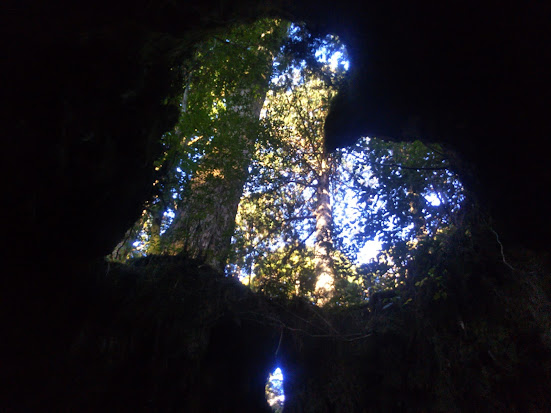Yakushima is a circular island off the southwest tip of Japan. By boat or by plane, it takes a bit of time and a chunk of change to get there. Barely fifteen miles across, Yakushima is home to fewer than fifteen thousand people, inhabiting towns and villages strung around the island’s perimeter. There’s no traffic, no noise, and definitely no night life.
There is, however, a lot of rain. Yakushima’s mountains manage to suck in just about every cloud floating across the East China Sea, bringing several meters - meters! - of annual rainfall to the island. Bring a change of socks.
At least it’s not a volcano.
15 million years ago, give or take a few weeks, masses of magma rising up through the seabed resulted in a clump of volcanoes that would form the island of Kuchinoerabujima. Meanwhile, less than ten miles to the east, another mass of molten rock would cool before pushing its way up from the ocean floor, creating the mass of granite called Yakushima.
To say Kuchinoerabu is active is an understatement. The island has enjoyed five volcanic eruptions in the last seven years. (Despite all the excitement, the island’s 150 residents are evidently determined to stay put.) Rock-hard Yakushima, on the other hand, has led a much quieter existence. But under the island’s sleepy façade lies a fascinating place.
The climate along the shores of Yakushima is classified as sub-tropical, marked by Banyan trees and, over on the west, a nesting beach for loggerhead sea turtles. Away from the shore, as the land begins to rise, laurel forests dominate the rain-soaked warm temperate zone, playing home to monkeys, deer, a few poisonous snake species, a handful of amphibians, and 167 kinds of birds.
Higher up, between 800 and 1,600 meters above sea level, mixed coniferous and broadleaf forests stand lush and thick and mossy, marked by Japanese cedars that live in excess of 1,000 years. Above 1,600 meters lies a cool temperate climate zone, where forests give way to shrubland, low-lying, hardy Yakushimadake bamboo, and the island’s playful gray granite peaks that are snow-capped in winter.
This vertical distribution of vegetation on Yakushima mirrors the longitudinal range of flora spanning the entire Japanese archipelago. The climate of high-altitude Yakushima is the same as is found around Sapporo, Hokkaido, a thousand miles to the north. The ecological value in the uniquely compressed variation of climate and flora in these hills led to UNESCO designating Yakushima – a good part of it at least – a World Natural Heritage site. Not bad for an island smaller than Chicago.
Yakusugi: Yakushima’s Age-Old Icon
Japanese cedars grow all over Japan, but
the ‘Yakusugi’ is unique among them. Their wildly slow growth rate, resulting
from poor soil and indicated by their compressed rings, is actually a boon to
their survival. These trees don’t grow particularly tall – they usually top out
at under 30 meters – but they can live well past a thousand years. Like really
old people, Yakusugi are gnarled and bent and twisted. This too aided their
survival, specifically during the logging boom of the early to mid-1900s when only the straightest, most useful timber was felled.
Yakusugi are found all over the island, in the higher warm temperate zones. As much of the island is protected, there are just a few designated areas for getting up close and personal with these beautiful monsters. Here are the three to visit:
1. Yakusugi Land
Leave it to the Japanese to give a place as
naturally spectacular as this such a dorky name. Pathways vary in length and cover three hundred vertical meters. You're likely to forget about both time and space while you're here.
2. Shiratani Unsuikyo Ravine
Like Yakusugi Land but more intense. One of my favorite places on this incredible Earth.
3. Arakawa Trail
This hiking route incorporates the logging
history of Yakushima with the oldest known cedar on the island, the Jomon-sugi,
estimated to be as much as 7,200 years old. As such, this ten-hour hike is the
piece de resistance for a lot of the island’s visitors.
Along with the trees and the moss, Yakushima’s wildlife makes a tremendous contribution to the magical nature of this place. Running along the mountainous western coast of the island, the ten-mile stretch of road known as the Seibu Rindo is a sure bet for seeing Yakuzaru and Yakushika, species of Japanese macaque and deer specific to Yakushima.
Waterfalls
Meters of rainfall among the granite mountains means rivers and waterfalls aplenty. These falls in particular stand out.
Hidden Spots
Yakushima has its more understated charms as well. Perusing maps or just cruising around can bring some unexpected surprises.


































No comments:
Post a Comment